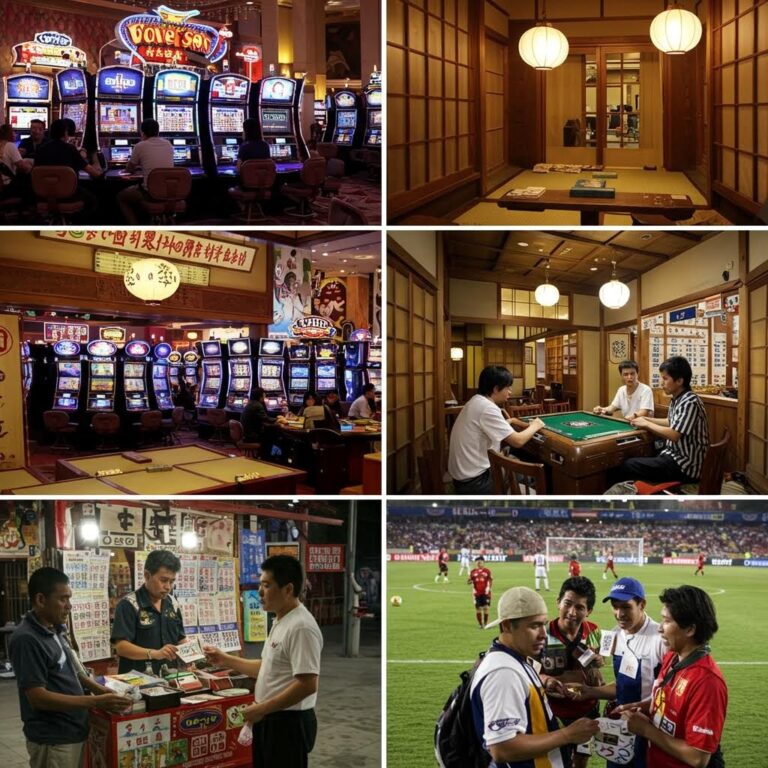The Psychology of “The Gambler’s Fallacy Squared”: Understanding Pattern Bias
The Double-Layer Cognitive Trap
The gambler’s fallacy squared represents a sophisticated psychological phenomenon where individuals fall prey to a two-tiered cognitive bias. This mental trap combines the basic gambler’s fallacy with an amplified belief in “due” outcomes, creating a particularly powerful form of irrational thinking in probability assessment. 토토 검증사이트
Evolutionary Origins and Modern Impact
Our brains evolved to identify patterns as a crucial survival mechanism, leading to deeply ingrained pattern-recognition systems. In modern gambling scenarios, these ancient neural pathways create a self-reinforcing feedback loop that exponentially increases belief in false probability patterns. The longer a streak continues, the more firmly people believe in an imminent reversal.
Psychological Mechanics
The core mechanism involves:
- Primary pattern bias: The basic expectation of reversal in random sequences
- Secondary reinforcement: Increasing conviction in “overdue” outcomes
- Temporal distortion: Misperception of probability over time
- Confirmation bias amplification: Selective memory of perceived pattern confirmations
Breaking the Cognitive Loop
Understanding these deep psychological mechanics enables more rational decision-making in probabilistic situations. Recognition of this dual-layer bias helps overcome the ingrained tendency to perceive meaningful patterns in random events, particularly in gambling contexts where stakes are high and emotions can override logic.
Impact on Decision Making
The fallacy particularly affects:
- Risk assessment capabilities
- Financial decision making
- Betting behavior
- Investment strategies
- Probability interpretation
This enhanced understanding of the gambler’s fallacy squared provides crucial insights into human cognitive biases and their impact on decision-making processes.
Understanding the Double-Layer Mental Trap
Understanding the Double-Layer Mental Trap in Gambling
The Fundamental Layers of Cognitive Bias
The double-layer mental trap represents a complex cognitive bias that particularly affects gambling behavior. This psychological phenomenon consists of two interconnected layers of faulty reasoning that can significantly impact decision-making.
First Layer: The Pattern Recognition Fallacy
The initial layer manifests as the gambler’s fallacy, where individuals develop a strong belief that random events will naturally self-correct.
This cognitive error leads players to expect pattern reversals after observing consistent streaks in games of chance.
Second Layer: The Timing Prediction Error
Building upon the first layer, the second cognitive trap emerges when players believe they can accurately predict the timing of statistical corrections.
This predictive fallacy becomes especially evident in casino environments, such as when roulette players observe multiple consecutive red outcomes and convince themselves they can forecast the exact moment black will appear.
The Reinforcing Nature of the Double-Layer Trap
The psychological feedback loop created by these two layers makes this cognitive trap particularly powerful.
The fundamental error of seeking patterns in randomness provides fertile ground for the secondary misconception about prediction timing. This creates a self-reinforcing cycle where each layer strengthens the other.
Breaking the Cycle
Understanding the mechanics of this double-layer trap is crucial for developing effective strategies to combat these cognitive biases.
The human brain’s natural tendency to seek patterns must be actively counterbalanced with rational analysis and statistical understanding to avoid falling into this complex psychological trap.
Origins of Pattern-Seeking Behavior
The Evolutionary Origins of Pattern-Seeking Behavior
Ancient Roots of Pattern Recognition
The pattern-seeking behavior that influences modern gambling decisions has deep evolutionary roots stretching back to our earliest ancestors.
Human survival depended critically on identifying environmental patterns – from tracking predator movements to anticipating seasonal changes in food availability. This fundamental cognitive mechanism shaped our species’ development and continues to influence decision-making today.
Neurological Basis of Pattern Recognition
The human brain’s pattern-seeking tendencies are hardwired into our neural circuitry through millennia of evolutionary adaptation.
The prefrontal cortex actively searches for order and meaning in random events, leading humans to perceive structured patterns even in genuinely random phenomena. This explains why people naturally detect constellations among random stars or distinguish faces within cloud formations.
Impact on Gambling Behavior
Three Key Manifestations
Pattern-seeking behavior manifests in gambling contexts through three primary mechanisms:
- Sequential Dependency – The assumption that past events influence future outcomes
- Coincidental Pattern Recognition – Attribution of meaning to random sequences
- Belief in Luck Streaks – Conviction in personal periods of fortune or misfortune
These cognitive tendencies, while advantageous for ancestral survival in predicting natural phenomena like animal migration or weather patterns, become problematic in modern probability-based scenarios.
The persistence of the gambler’s fallacy stems directly from these deeply ingrained evolutionary adaptations, making it remarkably resistant to logical counterarguments despite conscious awareness of its irrationality.
Common Real-World Examples
Understanding the Gambler’s Fallacy: Real-World Applications
Common Manifestations in Gambling Environments
The gambler’s fallacy appears most prominently in casino settings, particularly at roulette tables. Players frequently bet against a repeated sequence of colors, operating under the misguided belief that alternate outcomes become more probable.
For instance, after multiple red outcomes, players often increase their bets on black, demonstrating this fundamental cognitive bias. Lottery participants similarly avoid selecting recently drawn numbers, erroneously believing these numbers have reduced chances of reappearing.
Beyond the Casino: Everyday Decision Making
The fallacy pattern extends significantly into non-gambling scenarios. In medical settings, particularly maternity wards, families often make gender predictions based on previous birth sequences.
The financial sector witnesses this bias when investors assume market corrections are imminent solely because of extended downward trends. Weather prediction becomes subject to similar misconceptions, with people expecting long-term weather patterns to reverse based purely on duration.
Impact on Sports Analysis and Predictions
Sports analytics frequently demonstrates this cognitive error in action. Game predictions often rely on winning streak data rather than substantive team performance metrics.
Commentators and fans regularly anticipate losses for teams on extended winning streaks, disregarding crucial factors like team composition, player statistics, and current form. This represents a classic example of the gambler’s fallacy influencing professional analysis and public perception in sports betting and commentary.
The Role of Confirmation Bias
Understanding Confirmation Bias in Gambling Behavior
The Psychological Impact of Confirmation Bias
Confirmation bias deeply intertwines with the gambler’s fallacy, creating a powerful influence on betting decisions and risk assessment.
Gamblers consistently demonstrate selective memory retention, remembering instances where streak reversal predictions proved accurate while disregarding contradictory outcomes. This cognitive filtering mechanism strengthens the hold of probabilistic misconceptions.
Pattern Recognition and Cognitive Distortion
Players experiencing confirmation bias actively seek patterns that validate their existing probability beliefs.
When analyzing gambling outcomes, individuals focusing on specific sequences, such as multiple red numbers in roulette, tend to emphasize results matching their predictions while overlooking opposing evidence. This selective information processing creates a self-perpetuating cycle that reinforces the gambler’s fallacy.
Key Mechanisms of Cognitive Bias
Three fundamental mechanisms drive the relationship between confirmation bias and gambling behavior:
- Pattern-seeking behavior: The human tendency to identify meaningful sequences in random events
- Selective memory retention: Preferential storage of confirming evidence while discarding contradictory data
- Cognitive dissonance reduction: Active dismissal of statistical evidence that challenges existing beliefs
These psychological components combine to form a powerful cognitive trap, leading to increasingly irrational betting patterns and decision-making processes in gambling scenarios.
Breaking Free From False Causality
Breaking Free From False Causality in Gambling
Understanding Independent Events in Gambling
The fundamental concept of independent probability stands as the cornerstone of responsible gambling behavior.
Each gambling outcome – whether through dice, roulette wheels, or card deals – exists as a completely separate event from all others.
This critical understanding helps break the deceptive patterns that many players falsely perceive during gaming sessions.
The Mathematics Behind Random Events
Statistical independence proves that previous outcomes have zero influence on future results.
Consider this key example: After witnessing five consecutive heads in coin flips, the probability for tails remains exactly 50% on the next flip.
This mathematical truth directly contradicts our brain’s natural tendency to detect patterns within random sequences.
Strategies for Overcoming False Causality
Data-Driven Approach
- Track individual outcomes systematically
- Calculate true probability ratios
- Document results without emotional interpretation
Breaking Cognitive Biases
- Recognize that “hot streaks” are statistical illusions
- Understand that no outcome is ever “due”
- Remember that gaming devices have no memory
The path to breaking free from causality illusion requires embracing mathematical reality over intuitive pattern recognition.
By maintaining strict documentation and focusing on independent probability, players can develop a more rational approach to gambling activities.
Consistent reminders about the independence of each event serve as powerful tools against cognitive biases.
Through disciplined analysis and rejection of false patterns, gamblers can maintain clearer perspective during gaming sessions.

